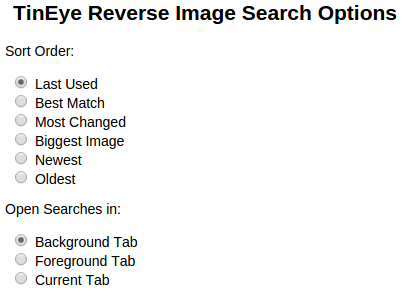Dark web is mostly illegal, say researchers by Lisa Vaas.
You can tell where Lisa comes out on the privacy versus law enforcement issue by the slant of her conclusion:
Users, what’s your take: are hidden services worth the political firestorm they generate? Are they worth criminals escaping justice?
Illegal is a slippery concept.
Marriage of first “kissing” cousins is “illegal” in:
Arkansas, Delaware, Idaho, Iowa, Kansas, Kentucky, Louisiana, Michigan, Minnesota, Mississippi, Missouri, Montana, Nebraska, Nevada, New Hampshire, North Dakota, Ohio, Oklahoma, Oregon, Pennsylvania, South Dakota, Texas, Washington, West Virginia, and Wyoming.
Marriage of first “kissing” cousins is legal in:
Alabama, Alaska, California, Colorado, Connecticut, District of Columbia, Florida, Georgia, Hawaii, Maryland, Massachusetts, New Jersey, New Mexico, New York, North Carolina (first cousins but not double first), Rhode Island, South Carolina, Tennessee, Vermont, and Virginia.
There are some other nuances I didn’t capture and for those see: State Laws Regarding Marriages Between First Cousins.
If you read Cryptopolitik and the Darknet by Daniel Moore & Thomas Rid carefully, you will spot a number of problems with their methodology and reasoning.
First and foremost, no definitions were offered for their taxonomy (at page 20):
- Arms
- Drugs
- Extremism
- Finance
- Hacking
- Illegitimate pornography
- Nexus
- Other illicit
- Social
- Violence
- Other
- None
Readers and other researchers are left to wonder what was included or excluded from each of those categories.
In science, that would be called an inability to replicate the results. As if this were science.
Moore & Rid recite anecdotal accounts of particular pornography sites, calculated to shock the average reader, but that’s not the same thing as enabling replication of their research. Or a fair characterization of all the pornography encountered.
They presumed that text was equivalent to image content, so they discarded all images (pages 19-20). Which left them unable to test that presumption. Hmmm, untested assumptions in science?
The results of the unknown basis for classification identied 122 sites (page 21) as pornographic out of the 5,205 initial set of sites.
If you accept Tor’s estimate of 30,000 hidden services that announce themselves every day, Moore & Rid have found that illegal pornography (whatever that means) is:
122 / 30000 = 0.004066667
Moore & Rid have established that “illegal” porn is .004066667% of the Dark Net.
I should be grateful Moore & Rid have so carefully documented the tiny part of the Dark Web concerned with their notion of “illegal” pornography.
But, when you encounter “reasoning” such as:
…
The other quandary is how to deal with darknets. Hidden services have already damaged Tor, and trust in the internet as a whole. To save Tor – and certainly to save Tor’s reputation – it may be necessary to kill hidden services, at least in their present form. Were the Tor Project to discontinue hidden services voluntarily, perhaps to improve the reputation of Tor browsing, other darknets would become more popular. But these Tor alternatives would lack something precious: a large user base. In today’s anonymisation networks, the security of a single user is a direct function of the number of overall users. Small darknets are easier to attack, and easier to de-anonymise. The Tor founders, though exceedingly idealistic in other ways, clearly appreciate this reality: a better reputation leads to better security.85 They therefore understand that the popularity of Tor browsing is making the bundled-in, and predominantly illicit, hidden services more secure than they could be on their own. Darknets are not illegal in free countries and they probably should not be. Yet these widely abused platforms – in sharp contrast to the wider public-key infrastructure – are and should be fair game for the most aggressive intelligence and law-enforcement techniques, as well as for invasive academic research. Indeed, having such clearly cordoned-off, free-fire zones is perhaps even useful for the state, because, conversely, a bad reputation leads to bad security. Either way, Tor’s ugly example should loom large in technology debates. Refusing to confront tough, inevitable political choices is simply irresponsible. The line between utopia and dystopia can be disturbingly thin. (pages 32-33)
it’s hard to say nothing and see public discourse soiled with this sort of publication.
First, there is no evidence presented that hidden services have damaged Tor and/or trust in the Internet as a whole. Even the authors concede that Tor is the most popular option anonymous browsing and hidden services. That doesn’t sound like damage to me. You?
Second, the authors dump all hidden services in the “bad, very bad” basket, despite their own research classifying only .004066667% of the Dark Net as illicit pornography. They use stock “go to” examples to shock readers in place of evidence and reasoning.
Third, the charge that Tor has “[r]efused to confront tough, inevitable political choices is simply irresponsible” is false. Demonstrably false because the authors point out that Tor developers made a conscious choice to not take political considerations into account (page 25).
Since Moore & Rid disagree with that choice, they resort to name calling, terming the decision “simply irresponsible.” Moore & Rid are entitled to their opinions but they aren’t going to persuade even a semi-literate audience with name calling.
Take Cryptopolitik and the Darknet as an example of how to not write a well researched and reasoned paper. Although, that isn’t a bar to publication as you can see.












